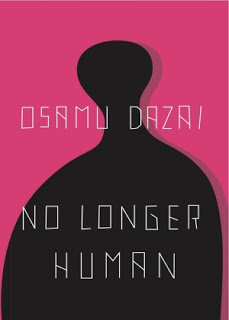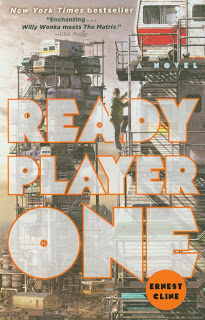
In this post I will discuss the following:
First, let's discuss the project that I was working on which led to this work. I wanted to do a program that manages the devices on my network. There is a router and several Wi-fi extenders, all of them with an HTTP interface. I wanted to know when they are reachable through the network, connect to the HTTP interface and gather data or perform actions like resetting the device and so on. In order to see if they were reachable, I was pinging them every second, so I thought I would like to see the evolution of the ping roundtrip time in a visual way, therefore the chart.
All of the values that I was displaying and all the commands that were available on the interface were using MVVM, the pattern developed by Microsoft for a better separation of presentation and data model. MVVM presents some difficulties, though, since most of the time directly getting the data and displaying it is more efficient and easier to do. It does allow for fantastic flexibility and good maintenance of the project. So, since I am a fan, I wanted to draw this chart via MVVM as well.
The MVVM chart
In order to do that I needed a viewmodel that abstracted the chart. Since I had several devices, each of them with a collection of pings containing the time of the ping and a nullable rountrip value, it would have been way too annoying to try to chart the values directly, so on the main viewmodel I created a specific chart model. This model contained a
BindingList of items of various custom types: GraphLines, GraphStarts and GraphEnds. When the ping failed I added an "end" to the model. When the ping succeeded after a fail, I would add a "start". And when the ping was continuously successful, I would add a "line" connecting the previous ping to the current one.
So, in order to draw anything, I used a Canvas. The Canvas is a very simple container that can position stuff at absolute values. The first thing you need to realize is that it is not a vectorial type of container, so when you draw something on a small canvas and you resize the window, everything remains at the same position and size. The other thing that quickly becomes apparent is that there are various ways of positioning objects on the Canvas. The attached properties
Canvas.Top, Canvas.Left, Canvas.Bottom and Canvas.Right can define the position of TextBlocks or other elements, including Rectangles and Ellipses. Lines, on the other hand, whether simple Line objects or something more complex, like Paths, are positioned using Points and X,Y coordinates. This would come to bite me on the ass later on.
WPF is very flexible. In order to add things to a Canvas, all one needs to do is to declare an
ItemsControl and then redefine the
ItemsPanel property to be a Canvas. The way objects are represented on the Canvas can be defined via
DataTemplates, in my case one for each type of item. So I created a template that contains a Line for the GraphLine type, another for GraphStart, containing a Rectangle, and one for GraphEnd, containing an Ellipse. Forget the syntax right now, first I had to solve the problem of the different ways to position something on a Canvas and the ItemsControl. You see, in order to position a Line, all you have to do is set the X1,Y1,X2,Y2 properties, but for Ellipses and Rectangles you need to set Canvas.Left and Canvas.Top. The problem with the ItemsControl is that for each of these not primitive objects it creates a
ContentPresenter to encapsulate them, therefore setting Canvas properties to the inner shape did nothing. The solution is to set a style for the ContentPresenter and set the Canvas properties on it. Surprise! Then the Lines stop working! The solution was to add several Canvases, one for the lines and one for the rectangles and ellipses, as ItemsControls, and one for static text and stuff like that, all in the same Container so that they overlap. But it worked. Then I started the program and watched the chart being displayed.
<ItemsControl ItemsSource="{Binding GraphItems}" Name="GraphLines">
<ItemsControl.Resources>
<DataTemplate DataType="{x:Type local:GraphLine}">
...
</DataTemplate>
<DataTemplate DataType="{x:Type local:GraphSpline}">
...
</DataTemplate>
<DataTemplate DataType="{x:Type local:GraphStart}">
...
</DataTemplate>
<DataTemplate DataType="{x:Type local:GraphEnd}">
...
</DataTemplate>
</ItemsControl.Resources>
<ItemsControl.ItemsPanel>
<ItemsPanelTemplate>
<Canvas/>
</ItemsPanelTemplate>
</ItemsControl.ItemsPanel>
</ItemsControl>But how did I calculate the coordinates of all of these items? As I said, the Canvas is a pretty static thing. If I resized the window, the items would remain in the same position and with the same size. Also, the viewmodel didn't have (and shouldn't have had) an idea of the actual size of the drawing Canvas. My solution was to use a
MultiBinding with a custom
converter. It would get two values, one would be a computed double value, from 0 to 1, that represented either vertical or horizontal position, the second would be the value of the dimension, the height or the width. The result would be, of course, the product of the two values. Luckily WPF has a very flexible Binding syntax, so it was no problem two define a value from the viewmodel and a value of the ActualWidth or ActualHeight properties of the Canvas object. This resulted in a very nice graph that adapted to my resizing of the window in real time without me having to do anything.
<Line Stroke="{Binding Ip, Converter={StaticResource TextToBrushConverter}}" StrokeThickness="2" >
<Line.X1>
<MultiBinding Converter="{StaticResource ResizeConverter}">
<Binding Path="X"/>
<Binding Path="ActualWidth" RelativeSource="{RelativeSource Mode=FindAncestor, AncestorType={x:Type Canvas}}"/>
</MultiBinding>
</Line.X1>
<Line.Y1>
<MultiBinding Converter="{StaticResource ResizeConverter}">
<Binding Path="Y"/>
<Binding Path="ActualHeight" RelativeSource="{RelativeSource Mode=FindAncestor, AncestorType={x:Type Canvas}}"/>
</MultiBinding>
</Line.Y1>
<Line.X2>
<MultiBinding Converter="{StaticResource ResizeConverter}">
<Binding Path="X2"/>
<Binding Path="ActualWidth" RelativeSource="{RelativeSource Mode=FindAncestor, AncestorType={x:Type Canvas}}"/>
</MultiBinding>
</Line.X2>
<Line.Y2>
<MultiBinding Converter="{StaticResource ResizeConverter}">
<Binding Path="Y2"/>
<Binding Path="ActualHeight" RelativeSource="{RelativeSource Mode=FindAncestor, AncestorType={x:Type Canvas}}"/>
</MultiBinding>
</Line.Y2>
</Line>Performance
The next issue in the pipeline was performance. Clearing the GraphItems collection and adding new items to it was very slow and presented some ugly visual artifacts. For this I used the inner mechanisms of the BindingList object. First I set the
RaiseListChangedEvents property to false, so that the list would not fire any events to the WPF mechanism. Then I cleared the list,added every newly calculated GraphItem to the list, set RaiseListChangedEvents back to true and fired a ListChanged event forcefully using the (badly named)
ResetBindings method.
GraphItems.RaiseListChangedEvents = false;
GraphItems.Clear();
foreach (var item in items)
{
GraphItems.Add(item);
}
GraphItems.RaiseListChangedEvents = true;
this.Dispatcher.Invoke(GraphItems.ResetBindings, DispatcherPriority.Normal);
All good, but then the overall performance of the application was abysmal. I would move to another program, then switch back to it and it wouldn't show up, or I would press a button and it wouldn't show up pressed, or the values of the data from the devices were not displayed sometimes. It wasn't that it used too much CPU or memory or anything like that, it was just a very sluggish user experience.
First idea was that the binding to the parent Canvas object to get the ActualWidth and the ActualHeight values was slow. I was right. In order to test this I removed any bindings to the Canvas and instead set the values directly to the converter, via the
SizeChanged event of the Canvas object. This made things slightly faster, but also made them look weird, since I would resize the window and only see a difference after SizeChanged fired. The performance gain was significant, but not that large. The UI was still sluggish.
void Canvas_SizeChanged(object sender, SizeChangedEventArgs e)
{
var resizeConverter = (ResizeConverter)this.Resources["ResizeConverter"];
resizeConverter.Size = e.NewSize;
}
Now, you would ask yourself, what is the purpose of my using this ItemsControl and Canvas combination? It is in order to use the MVVM pattern. Just drawing directly on the Canvas would violate that, wouldn't it? Or would it? In this case the binding of the values in the viewmodel to the chart is one way. I only need to display stuff and nothing that happens on the chart UI changes the viewmodel. Also, since I chose to recreate all the chart items at every turn, it just means I am delegating clearing the Canvas and drawing everything to the WPF mechanism, nothing more. In fact, if I would just subscribe to the GraphItems ListChanged event I would be able to draw everything and not really have any strong link between data model and presentation. So I did that. The side effect of this was that I didn't need two ItemsControl/Canvas instances. I only needed one Canvas and I would add items to it as I saw fit.
Of course, the smart reader that you are, you realized that I need to know the type of the viewmodel in order to subscribe to the items list. The very correct way to do it would have been to encapsulate the Canvas into a control that would have received a list of items as a model and it would have handled all the drawing itself. It makes sense: you don't want a Canvas, what you really want is a Chart component that handles everything for you. I leave that to the enterprising reader, since it is outside the scope of this post.
Another thing that I did not do and it probably made sense in terms of performance, was to add items to the chart, somehow translate the position of the chart and remove the items that were outside the visible portion of the chart. That sounds like a good feature of the Chart control :) Again, I leave it to the reader to try to do something like that.
Bezier curves instead of lines
The last thing that I want to cover is making the chart less jagged. The roundtrip ping values were all over the place resulting in a jagged line kind of chart. I wanted something smoother, like a continuous curvy line. So I decided to replace the Line representation with a Bezier curve one. I am not a graphical person, neither a math geek. I had no idea what a Bezier curve is, only that it helps in creating these nice looking curves that blend into each other. Each Bezier curve is defined by four points so, in my ignorance, I thought that I just have to pass four points from the list instead of the two required to form a Line. The result was hilarious, but not what I wanted.
Reading the theory we learn that... what the hell is that on Wikipedia? How can anyone understand that?!... Ugh!
So let's start with some experiments. Let's use the wonderful
XamlPadX application to see some examples of that using WPF. First, let's draw a jagged three line graphic and try to use the four points to define a Bezier curve and see what happens.
<Page xmlns="http://schemas.microsoft.com/winfx/2006/xaml/presentation" xmlns:sys="clr-namespace:System;assembly=mscorlib" xmlns:x="http://schemas.microsoft.com/winfx/2006/xaml" >
<Canvas>
<Line X1="100" Y1="100" X2="200" Y2="300" Stroke="Gray" StrokeThickness="2"/>
<Line X1="200" Y1="300" X2="300" Y2="150" Stroke="Gray" StrokeThickness="2"/>
<Line X1="300" Y1="150" X2="400" Y2="200" Stroke="Gray" StrokeThickness="2"/>
<Path Stroke="Red" StrokeThickness="2">
<Path.Data>
<PathGeometry>
<PathGeometry.Figures>
<PathFigureCollection>
<PathFigure StartPoint="100,100">
<PathFigure.Segments>
<PathSegmentCollection>
<BezierSegment Point1="200,300" Point2="300,150" Point3="400,200" />
</PathSegmentCollection>
</PathFigure.Segments>
</PathFigure>
</PathFigureCollection>
</PathGeometry.Figures>
</PathGeometry>
</Path.Data>
</Path>
</Canvas>
</Page>
As we can see, the curve does touch the first and the fourth points and sort of approximates the line, but not very clearly. The problem becomes even more obvious when we add another point and we create two Bezier curves, from the first and last four points. The two curves intersect, they are not continuous. Even if you take points four by four, the resulting curves, even if they continue each other, they do it with straight corners, the opposite of what I wanted.
Let's try the opposite, let's draw one Bezier curve and then lines that connect the first and second and then the third and fourth points. We see that the lines define tangents to the two arcs comprising the Bezier curve. That intuitively tells us something: if two Bezier curves would to seamlessly blend into each other, then the straight lines that define them would also have to be continuous. We try that in XamlPadX and yes! It works.
So, from this we learn something. First of all, the first and last points of the Bezier have to be the points used in a normal Line. Then the last two points need to be part of the same line for the first two points of the next curve. So what about the second and third points? How do I choose those? Can I choose any lines to define my curves? Thinking of the chart that I am looking for, I just want that the jagged edges turn into nice little curves. I also don't want to think of other points than the points that would normally define a single line, that means I shouldn't use future data in defining the middle points of the curve that defines current data. So I just made the decision to use only horizontal lines to define curves. That means for any pair of coordinates X1,Y1, X2,Y2 I would create four pairs like this: X1,Y1 X1+something,Y1 X2-something,Y2 X2,Y2. That value could be anything, but I've decided it would be a percentage of the horizontal distance between two points.
Final result: using a percentage, let's say 20%, I would turn the pair of coordinates into X1,Y1 X1+(X2-X1)*0.2 X1+(X2-X1)*(1-0.2) X2,Y2. Let's see how that looks on the original jagged line. Let's use 50% instead. And for some fun, let's put it to 80%, 100% and even 200%.
<Page xmlns="http://schemas.microsoft.com/winfx/2006/xaml/presentation" xmlns:sys="clr-namespace:System;assembly=mscorlib" xmlns:x="http://schemas.microsoft.com/winfx/2006/xaml" >
<Canvas>
<Line X1="100" Y1="100" X2="200" Y2="300" Stroke="Gray" StrokeThickness="2"/>
<Line X1="200" Y1="300" X2="300" Y2="150" Stroke="Gray" StrokeThickness="2"/>
<Line X1="300" Y1="150" X2="400" Y2="200" Stroke="Gray" StrokeThickness="2"/>
<Path Stroke="Red" StrokeThickness="2">
<Path.Data>
<PathGeometry>
<PathGeometry.Figures>
<PathFigureCollection>
<PathFigure StartPoint="100,100">
<PathFigure.Segments>
<PathSegmentCollection>
<BezierSegment Point1="150,100" Point2="150,300" Point3="200,300" />
</PathSegmentCollection>
</PathFigure.Segments>
</PathFigure>
<PathFigure StartPoint="200,300">
<PathFigure.Segments>
<PathSegmentCollection>
<BezierSegment Point1="250,300" Point2="250,150" Point3="300,150" />
</PathSegmentCollection>
</PathFigure.Segments>
</PathFigure>
<PathFigure StartPoint="300,150">
<PathFigure.Segments>
<PathSegmentCollection>
<BezierSegment Point1="350,150" Point2="350,200" Point3="400,200" />
</PathSegmentCollection>
</PathFigure.Segments>
</PathFigure>
</PathFigureCollection>
</PathGeometry.Figures>
</PathGeometry>
</Path.Data>
</Path>
</Canvas>
</Page>
That's it, folks. I hope you enjoyed this as much as I did and it helps you in future projects.
 FreedomTM is the sequel, or rather the second part, of Daniel Suarez's Daemon, which I've reviewed previously. While Daemon spooked me with its realism, FreedomTM does away with all that and changes both pace, scope and plot. I guess Suarez had this in his head from the beginning of starting the book, but I didn't see it coming. Be warned, if you have not read Daemon, this review is going to have some serious spoilers.
FreedomTM is the sequel, or rather the second part, of Daniel Suarez's Daemon, which I've reviewed previously. While Daemon spooked me with its realism, FreedomTM does away with all that and changes both pace, scope and plot. I guess Suarez had this in his head from the beginning of starting the book, but I didn't see it coming. Be warned, if you have not read Daemon, this review is going to have some serious spoilers.












